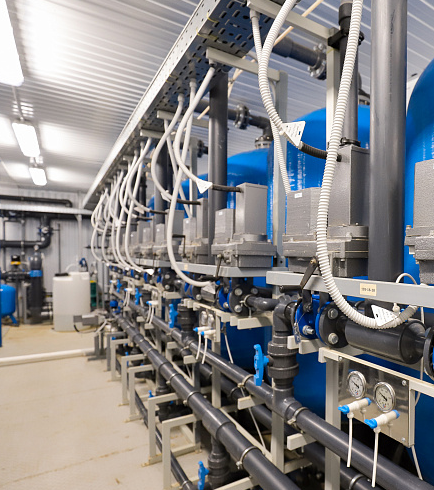Nov . 23, 2024 12:50 Back to list
installing a submersible pump
Installing a Submersible Pump A Step-by-Step Guide
Submersible pumps are invaluable tools for managing water in various applications, from removing excess water in basements to supplying water from wells. Installing a submersible pump may seem daunting, but with the right tools, knowledge, and precautions, you can carry out this task efficiently. This guide will walk you through the steps to install a submersible pump effectively.
Tools and Materials Needed
Before starting the installation, ensure you have the following tools and materials on hand
1. Submersible Pump Choose a pump suitable for your water level and flow rate needs. 2. PVC or Polyethylene Pipe For connecting the pump to the discharge point. 3. Pipe Fittings Includes elbows, tees, and connectors. 4. Cable Depending on the pump, you may need extra cable for electrical connections. 5. Wrench For tightening fittings. 6. Sump Pit (if necessary) A hole or chamber to house the pump, typically 2 feet deep. 7. Check Valve This prevents backflow and allows the water to flow in one direction. 8. Electrical Components A junction box, circuit breaker, and possibly a float switch for automatic operation. 9. Safety Gear Gloves and goggles to protect yourself during installation.
Step-by-Step Installation Process
Step 1 Preparing the Site
Before installing the pump, prepare the area where it will be located. If you are using a sump pit, dig a hole that is at least 2 feet deep and wide enough to accommodate the pump. Ensure that the pit is clean and free from debris.
Step 2 Setting the Pump in Place
Place the submersible pump in the sump pit, ensuring it sits straight and stable. It’s essential that the pump is positioned above the sediment that may settle at the bottom of the pit. This prevents clogging and ensures efficient operation.
Step 3 Connecting the Discharge Pipe
installing a submersible pump

Attach the discharge pipe to the outlet of the pump. Use the correct fittings to ensure a watertight seal. It’s advisable to use a check valve in the discharge line to prevent backflow when the pump shuts off. Make sure the pipe is securely fastened and runs uphill if possible to allow for gravity drainage.
Step 4 Electrical Connections
Electrical connections are crucial for the efficient operation of the pump. Follow these guidelines
1. Turn off the Power Before handling any electrical components, switch off the power to avoid electrocution. 2. Make the Connections Connect the pump’s power cable to your electrical supply according to the manufacturer's instructions. It’s crucial to ensure all connections are tight and protected from moisture. 3. Install a Float Switch If you want the pump to operate automatically, connect a float switch to the pump. This device will turn the pump on and off based on the water level in the pit.
Step 5 Testing the Pump
After all connections are made, it’s time to test the pump. Restore power and observe the pump's operation. Ensure that it effectively removes water from the sump pit and that there are no leaks in the discharge pipe.
Step 6 Final Check and Maintenance
Once the pump is operating correctly, perform a final check to ensure everything is secure. Regular maintenance checks are essential to keep your submersible pump in optimal condition. This includes cleaning the pump, checking the electrical components, and testing the float switch periodically.
Conclusion
Installing a submersible pump can significantly improve your ability to manage water in various environments. By following these steps and paying careful attention to detail, you can ensure a successful installation. Always prioritize safety while working with electrical components and water. With proper installation and maintenance, your submersible pump will serve you well for years to come.
-
Submersible Water Pump: The Efficient 'Power Pioneer' of the Underwater World
NewsJul.01,2025
-
Submersible Pond Pump: The Hidden Guardian of Water Landscape Ecology
NewsJul.01,2025
-
Stainless Well Pump: A Reliable and Durable Pumping Main Force
NewsJul.01,2025
-
Stainless Steel Submersible Pump: An Efficient and Versatile Tool for Underwater Operations
NewsJul.01,2025
-
Deep Well Submersible Pump: An Efficient 'Sucker' of Groundwater Sources
NewsJul.01,2025
-
Deep Water Well Pump: An Efficient 'Sucker' of Groundwater Sources
NewsJul.01,2025
-
 Submersible Water Pump: The Efficient 'Power Pioneer' of the Underwater WorldIn the field of hydraulic equipment, the Submersible Water Pump has become the core equipment for underwater operations and water resource transportation due to its unique design and excellent performance.Detail
Submersible Water Pump: The Efficient 'Power Pioneer' of the Underwater WorldIn the field of hydraulic equipment, the Submersible Water Pump has become the core equipment for underwater operations and water resource transportation due to its unique design and excellent performance.Detail -
 Submersible Pond Pump: The Hidden Guardian of Water Landscape EcologyIn courtyard landscapes, ecological ponds, and even small-scale water conservancy projects, there is a silent yet indispensable equipment - the Submersible Pond Pump.Detail
Submersible Pond Pump: The Hidden Guardian of Water Landscape EcologyIn courtyard landscapes, ecological ponds, and even small-scale water conservancy projects, there is a silent yet indispensable equipment - the Submersible Pond Pump.Detail -
 Stainless Well Pump: A Reliable and Durable Pumping Main ForceIn the field of water resource transportation, Stainless Well Pump has become the core equipment for various pumping scenarios with its excellent performance and reliable quality.Detail
Stainless Well Pump: A Reliable and Durable Pumping Main ForceIn the field of water resource transportation, Stainless Well Pump has become the core equipment for various pumping scenarios with its excellent performance and reliable quality.Detail
